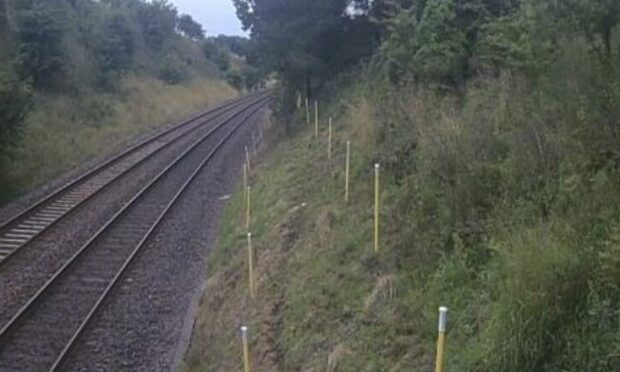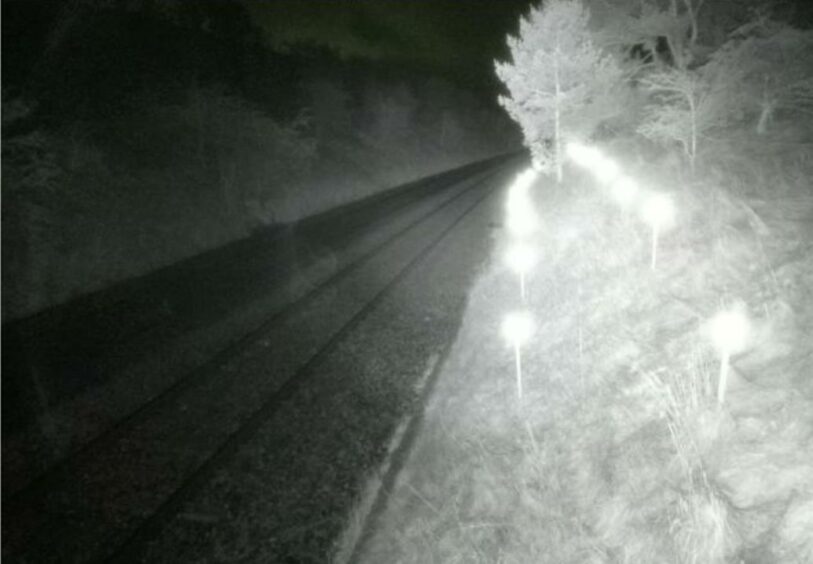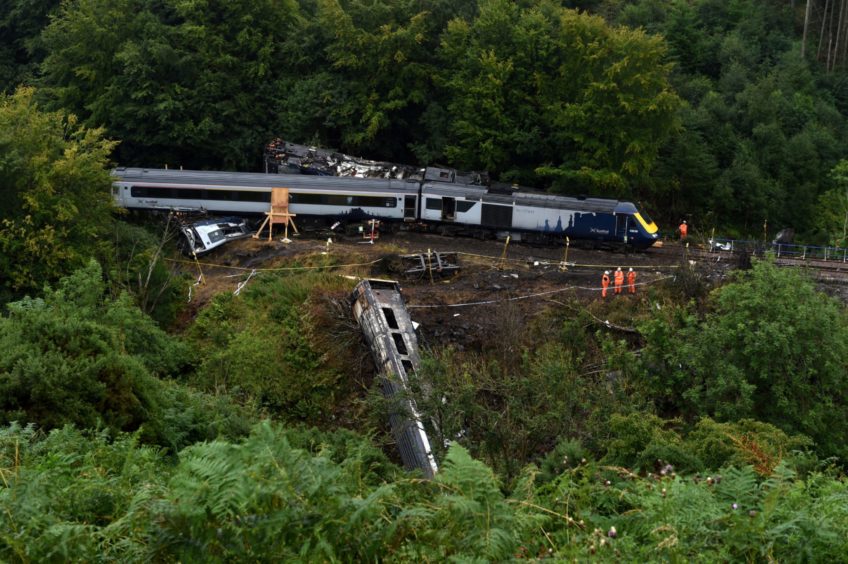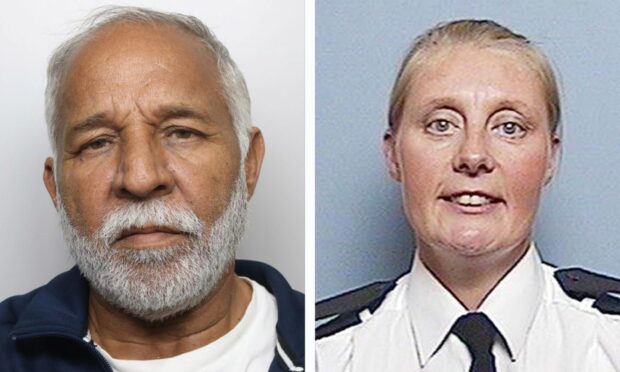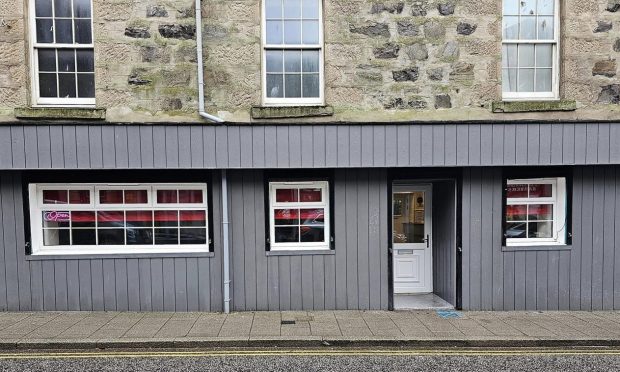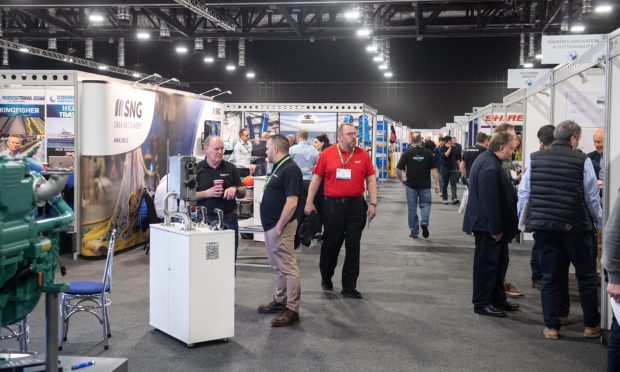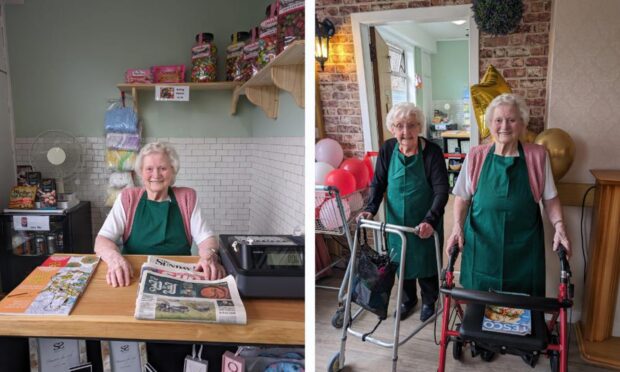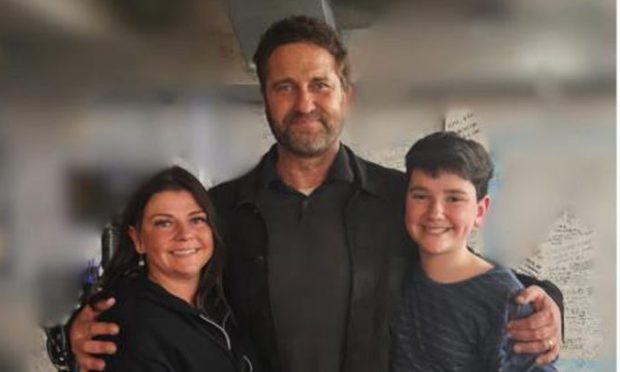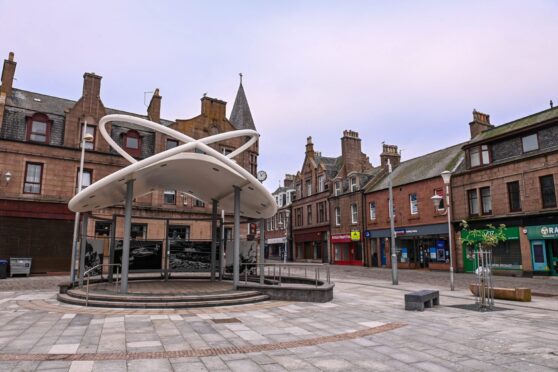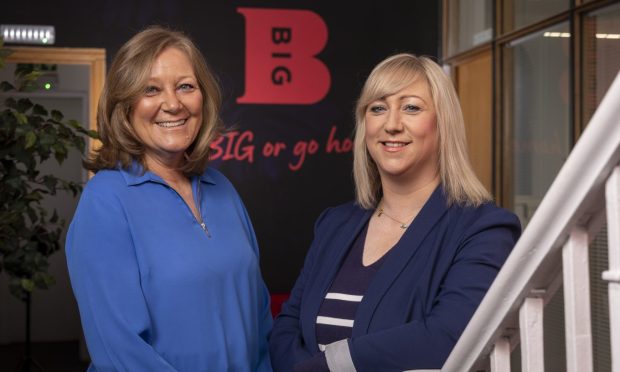Tilt meters are being fitted on Scotland’s railway to help slow or stop trains before reaching a problem such as a landslip.
The decision comes less than two years after the tragic derailment at Stonehaven that was caused by a landslip.
Groups of sensors that alert train drivers to issues on the line within two minutes of a landslide have already been placed at 26 locations in Scotland.
Seven sites set to be installed in the coming months – including the Aberdeen to Inverness line and the Kyle of Lochalsh route.
The sensors will quickly alert Network Rail about movement on slopes above or below the railway.
It is hoped that they will reduce the risk from landslips and improve the overall safety of the railway by detecting movement in slopes above or below the line.
What is a tilt meter?
A tilt meter is a system that has two banks of wireless sensors, typically spaced 8ft (2.5metre) apart with a centrally mounted pole, logger and cameras to monitor data from the sensors.
It provides notifications in typically less than two minutes.
Tilt sensors detect movement in slopes when there is more than a five-degree tilt and send the alert via the mobile network to alert train controllers to the potential danger.
The system is powered by solar panels with battery back-up.
A Network Rail spokesman said: “Slopes around the railway are subject to the impact of weather and given climate change, are experiencing more and more extreme weather – particularly heavy and prolonged rainfall.
“By April 2024, tilt monitoring will have been installed at 100 locations across Scotland’s railway.”
⛰️ Tilt meters being trialled on Scotland’s Railway will be used to quickly alert us to movement on slopes above or below the railway, meaning we can slow or stop trains before reaching the problem.
https://t.co/0aczHPEw9l— Network Rail Scotland (@NetworkRailSCOT) February 4, 2022
Meters ‘will mitigate risk’
Alan Ross, director of engineering and asset management at Network Rail said: “In Scotland, we are increasing our use of new monitoring and surveillance technologies to mitigate risks.
“This includes making more use of drone and helicopter surveys and we are also trialling new weather forecasting methods for the railway.
“Our weather is increasingly changeable and technology has provided us with tools to proactively monitor and model when and where extreme weather will occur and how it will impact on our infrastructure.”
He continued: ““We are at the forefront of deploying remote monitoring equipment, and we continue to support research and development into a wider range of equipment and technologies which will help protect our infrastructure in the future.”
Tragic derailment led to recommendations about safety on the line
A report into the tragic derailment at Carmont near Stonehaven on August 12, 2020 said Scotland should “act fastest” on recommendations made after the incident.
The tragedy resulted in the deaths of Brett McCullough, Donald Dinnie and Chris Stuchbury after the 6.38am service from Aberdeen to Glasgow hit a landslip.
In the aftermath of the incident, Network Rail commissioned two reviews to help prevent similar tragedies in the future, including a Weather Advisory Task Force (WATF) headed by Professor Dame Julia Slingo on how best to understand and manage adverse and extreme weather events.
Dame Slingo’s report put forward five major recommendations for Network Rail to deliver “greater safety and satisfaction for its passengers”, including a recommendation to “build its professional competencies in meteorology, hydrology and climate change”.
